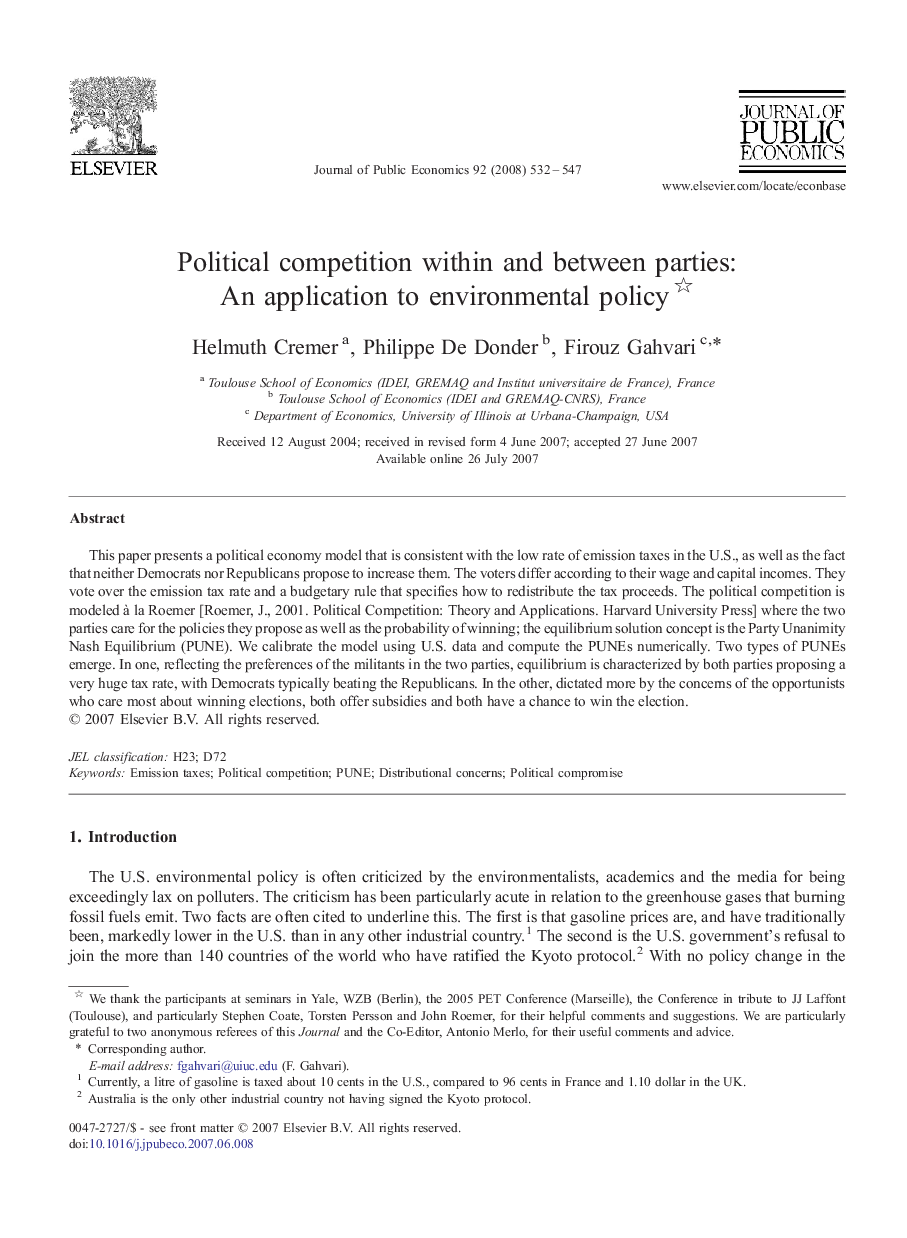| Article ID | Journal | Published Year | Pages | File Type |
|---|---|---|---|---|
| 969950 | Journal of Public Economics | 2008 | 16 Pages |
This paper presents a political economy model that is consistent with the low rate of emission taxes in the U.S., as well as the fact that neither Democrats nor Republicans propose to increase them. The voters differ according to their wage and capital incomes. They vote over the emission tax rate and a budgetary rule that specifies how to redistribute the tax proceeds. The political competition is modeled à la Roemer [Roemer, J., 2001. Political Competition: Theory and Applications. Harvard University Press] where the two parties care for the policies they propose as well as the probability of winning; the equilibrium solution concept is the Party Unanimity Nash Equilibrium (PUNE). We calibrate the model using U.S. data and compute the PUNEs numerically. Two types of PUNEs emerge. In one, reflecting the preferences of the militants in the two parties, equilibrium is characterized by both parties proposing a very huge tax rate, with Democrats typically beating the Republicans. In the other, dictated more by the concerns of the opportunists who care most about winning elections, both offer subsidies and both have a chance to win the election.
